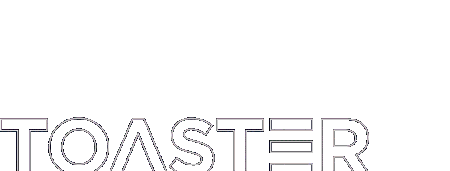If the global advertising industry were to fully embrace the potential of neurodivergent thinkers and their lived experiences, what would the future of marketing look like? Tanvi Shah, Senior Copywriter at Toaster India, shares her inspiring journey of transforming her ADHD diagnosis into a powerful asset within the fast-paced advertising world, while outlining helpful, inclusive strategies for creatives and execs.
The Pitch That Changed Everything
It was a pivotal moment in my early advertising journey. I found myself in the midst of a high-stakes pitch, surrounded by my team and facing a significant potential client. As we were presented with a question, my mind began racing, and I could feel my ADHD diagnosis kick into high gear. Instead of fighting it, I let go, allowing my thoughts to run free. Suddenly, a unique idea sparked, inspired by a diverse range of experiences from my past including film and podcasting.
With adrenaline coursing through me, I began to articulate my perspective. My heart raced, and my palms grew damp, but I pushed through, translating the whirlwind of thoughts into a captivating narrative. Although I occasionally zoned out, my passion and conviction shone through. The clients were enthralled by the fresh concept, and we secured the account.
The challenge was to devise an interactive print campaign featuring successful female entrepreneurs from India's Tier 2 and Tier 3 cities, highlighting the brand's initiative. My idea was to incorporate QR codes alongside their stories, which, when scanned, would showcase their actual voices, pre-recorded with a phone mouthpiece. This innovative blend of sound and visuals in a print ad resonated with the clients, although it faced technical hurdles that prevented it from coming to fruition.
This experience taught me that embracing my ADHD could unlock a world of creativity and allow me to excel in the fast-paced advertising world. It was a defining moment that fundamentally transformed my career and self-perception.It wasn't until I was diagnosed with ADHD years later at 30 that everything fell into place. The constant mental chatter, the zoning out, and the ability to draw unconventional connections – it all made sense. I began to understand that my neurodiversity was not a hindrance but a unique set of traits that, when harnessed effectively, could help set me up for success as I navigated my way through the advertising industry.
The Neurodiversity Advantage
Studies have shown that ADHD is more prevalent in creative industries compared to the general population. The World Health Organization found that 7% of adults in the creative sector have ADHD, significantly higher than the 2.5% prevalence in the overall adult population [Source]. This intriguing statistic suggests that individuals with ADHD are naturally drawn to fields like advertising, where their unique cognitive abilities, such as divergent thinking and hyperfocus, can be harnessed as valuable assets.
As a seasoned creative professional with ADHD, I have embraced my neurodiversity as a strategic advantage in driving innovation and delivering impactful results - for myself, my team, my colleagues, and my clients. The ability to hyperfocus on tasks that ignite my passion, combined with my multifaceted background, empowers me to approach advertising challenges with a fresh perspective and generate ideas that are often unusual, but just right. [Source]
Thriving with ADHD: Strategies for Success
Navigating the fast-paced advertising landscape with ADHD has presented its fair share of challenges. Time management, organisation, and the relentless pressure of looming deadlines can be overwhelming at times. However, through introspection and the development of effective coping mechanisms, I have learned to harness my strengths while managing my weaknesses.Some of the practical strategies that have significantly enhanced my productivity include:
Deconstructing complex tasks into manageable, bite-sized pieces.
Visualising ideas and concepts through mind maps and mood boards.
Leveraging focus-enhancing tools and apps to maintain concentration.
Fostering open communication with colleagues and managers about my ADHD to cultivate a supportive and understanding work environment.
These techniques not only empower me to excel but can also serve as valuable tools for other neurodiverse professionals navigating the dynamic advertising industry. To all my fellow ADHD creatives - I hope you find them useful too!
The Role of Organisational Support
Senior leaders and key decision-makers in advertising have the power to shape a future where neurodiversity is not only acknowledged but celebrated and nurtured, paving the way for groundbreaking work that deeply resonates with multi-faceted audiences. By creating inclusive environments that value and support individuals with diverse cognitive styles, organisations can unlock a rich tapestry of creativity and innovation.Initiatives that can nurture neurodiverse talent include:
Spearheading awareness campaigns and educational programs to foster a deeper understanding of ADHD.
Investing in tailored training and development opportunities that cater to the unique needs of neurodiverse individuals.
Actively championing diversity and inclusion at all levels of the organisation.
Establishing robust employee resource groups and mentorship programs to provide support and guidance.
By cultivating a neurodiverse workforce, Adland can pioneer a new era of creative excellence and deliver transformative results that push the boundaries of what's possible.
A Rallying Call to Embrace Neurodiversity
To my fellow neurodiverse creatives, I invite you to embrace your unique talents as your superpowers. Your ADHD, your rich tapestry of experiences, and your unconventional perspective make you an invaluable asset in the world of advertising. Dare to share your innovative ideas, no matter how unorthodox they may seem, for your voice has the power to disrupt the status quo and propel the industry forward.
As a senior professional, I implore leaders to become ardent advocates for neurodiversity within their organisations. By fostering supportive and inclusive workplace cultures, we can harness the immense potential of diverse thinking styles and give rise to groundbreaking work that leaves an indelible mark on the world.Moreover, embracing neurodiversity is not just a moral imperative; it is a strategic business decision. In a rapidly evolving world, where consumers demand authenticity and brands seek to forge meaningful connections, the unique insights and perspectives of neurodiverse professionals can be the key to crafting campaigns that truly resonate.
By harnessing the power of neurodiversity, we can create work that not only drives business results but also leaves a lasting impact on society.So let us come together as an industry to champion neurodiversity in all its forms. By embracing the full spectrum of human potential, we can usher in a new era of creativity and innovation in advertising – one that is more inclusive, more authentic, and more transformative than ever before.


